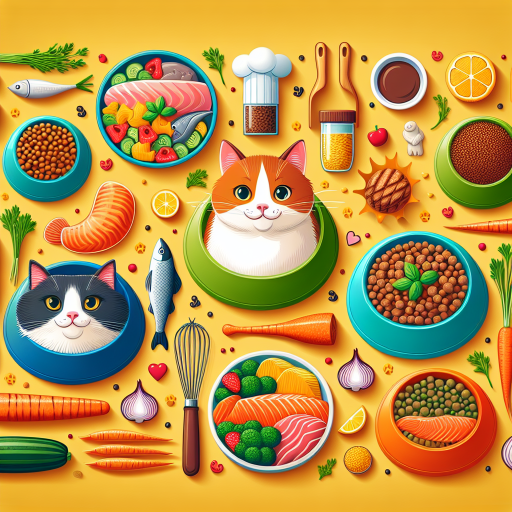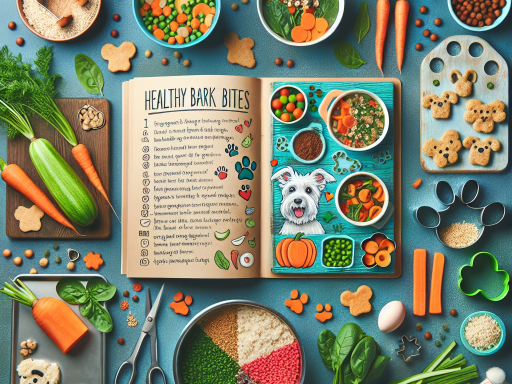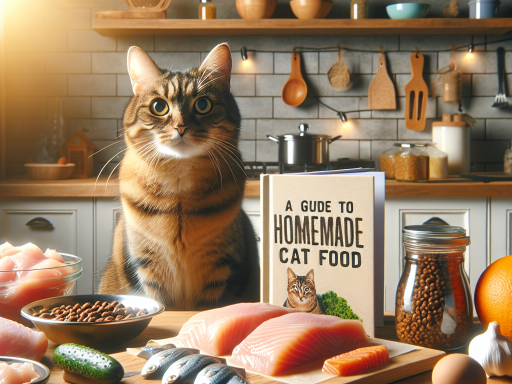Hey there, fellow cat lover! Have you been hearing a lot about grain-free diets for cats and wondering what all the fuss is about? You’re in the right place. Let’s dive into the world of grain-free cat food and unravel why it’s gaining popularity among pet parents.
What is a Grain-Free Diet?
First things first, let’s break down what we mean by a grain-free diet. Simply put, it’s a diet that omits grains such as wheat, corn, rice, and barley. Instead, grain-free cat food focuses on alternative sources of carbohydrates and proteins that are more aligned with a cat’s natural diet.
Why Consider a Grain-Free Diet for Your Cat?
Cats are obligate carnivores, which means their bodies are designed to get nutrients primarily from animal sources. While grains aren’t necessarily harmful, they aren’t a natural part of a cat’s diet. Many cat owners choose grain-free options to mimic a more ancestral diet that is high in protein and low in carbohydrates.
Addressing Common Concerns
Switching to a grain-free diet can be a bit daunting, so it’s important to address some common concerns:
- Cost: Grain-free foods can sometimes be pricier. However, many pet parents find the benefits worth the investment.
- Quality: Not all grain-free foods are created equal. It’s crucial to choose reputable brands that use high-quality ingredients.
- Health: Always consult with your veterinarian before making significant changes to your cat’s diet. They can provide personalized advice based on your cat’s health history.
Understanding the Ingredients
In grain-free cat food, grains are typically replaced with ingredients like sweet potatoes, peas, and lentils. These alternatives provide the necessary carbohydrates and fiber without the need for grains. Additionally, these recipes often include a higher percentage of meat, which aligns well with a cat’s dietary needs.
Who Can Benefit from a Grain-Free Diet?
Grain-free diets aren’t just a trend; many cats can genuinely benefit from this type of nutrition. If your cat has shown signs of food allergies or intolerances, such as itching, digestive issues, or chronic ear infections, a grain-free diet might help alleviate these symptoms. Even if your cat is perfectly healthy, a grain-free diet can still offer a high-quality nutritional profile that supports overall well-being.
Final Thoughts
Embarking on the journey of switching your cat to a grain-free diet is a thoughtful decision that can enhance their health and happiness. While it requires some research and possibly a bit of trial and error, the potential benefits make it a worthwhile consideration for many pet parents. Stay tuned as we delve deeper into the specifics of grain-free diets for cats, including delectable recipes and valuable tips for a smooth transition.
Happy feeding!
Benefits of Feeding Your Cat Grain-Free Food
Hey there, fellow cat lover! If you’re considering switching your feline friend to a grain-free diet, you’re likely wondering about the benefits. Let’s dive into all the purr-tastic perks of grain-free cat food!
1. Improved Digestion
One of the most significant benefits of grain-free cat food is improved digestion. Cats are obligate carnivores, meaning their bodies are naturally designed to digest meat, not grains. Grains like corn, wheat, and soy can be tough on their tummies. By eliminating these from their diet, you might notice fewer digestive issues such as:
- Less frequent vomiting
- Reduced flatulence
- Decreased incidences of diarrhea
In essence, a grain-free diet can lead to a happier, more comfortable cat with a healthier digestive system.
2. Allergy Relief
If your cat suffers from allergies, grains might be a contributing factor. Many cats are allergic or sensitive to grains, which can cause symptoms like itchy skin, excessive scratching, and even hair loss. Switching to grain-free food can often alleviate these issues. Look for signs of improvement in your cat’s coat and overall behavior—less itching can mean a more content kitty!
3. Weight Management
Grain-free cat food tends to be higher in protein and lower in carbohydrates compared to traditional cat food. This balance can be beneficial for weight management. A high-protein diet supports lean muscle mass and helps your cat feel full without the extra calories from grains. If your feline friend is a bit on the chunky side, a grain-free diet might be a step in the right direction.
4. Enhanced Energy Levels
A diet rich in high-quality proteins and healthy fats can provide your cat with the energy they need to play, pounce, and explore. Cats thrive on a diet that mimics what they would eat in the wild, and grain-free foods often include high-quality animal proteins and essential nutrients that support vitality and overall well-being.
5. Shinier Fur and Healthier Skin
Another fantastic benefit of grain-free cat food is the potential for a shinier coat and healthier skin. Grain-free options often incorporate nourishing ingredients like fish oil and other sources of omega-3 and omega-6 fatty acids. These nutrients are known to promote a glossy, healthy fur and maintain skin health. Who doesn’t want their cat to look their absolute best?
6. Better Urinary Health
Grain-free cat food can also contribute to better urinary health. Many grain-free diets contain cranberries and a higher moisture content, which help to support urinary tract health and reduce the risk of urinary infections. This is particularly crucial for male cats, who are more prone to urinary issues.
7. Tailored Nutrition
Lastly, grain-free cat foods often come in various formulations tailored to meet specific needs, such as age, size, and activity level. Whether you have a senior cat, a kitten, or an active adult, there’s likely a grain-free recipe that suits their nutritional needs perfectly.
In conclusion, the benefits of feeding your cat grain-free food are numerous and can lead to a healthier, happier feline friend. From improved digestion and allergy relief to enhanced energy and a shinier coat, the switch to grain-free food might just be what your cat needs. Always consult with your vet before making any significant diet changes, but don’t be afraid to explore the world of grain-free diets for a better quality of life for your whiskered companion!
Key Ingredients in Grain-Free Cat Food Recipes
When it comes to choosing the best grain-free food for your feline friend, it’s important to understand the key ingredients that make up a nutritious diet. Here are some essential components to look for in grain-free cat food recipes:
- High-Quality Protein: Cats are obligate carnivores, which means they require a diet high in animal-based protein. Look for recipes that list real meat, such as chicken, turkey, or fish, as the first ingredient.
- Healthy Fats: Fats are essential for a cat’s overall health, providing energy and promoting a shiny coat. Opt for recipes that include sources of healthy fats, such as salmon oil or chicken fat.
- Low Carbohydrates: Since cats have a limited ability to digest carbohydrates, it’s important to choose recipes that are low in grains and starches. Instead, look for ingredients like sweet potatoes or peas as alternative sources of energy.
- Essential Vitamins and Minerals: Make sure the recipe includes essential vitamins and minerals to support your cat’s overall well-being. Look for ingredients like fruits, vegetables, and supplements to provide a balanced diet.
- Probiotics and Prebiotics: A healthy digestive system is crucial for your cat’s overall health. Choose recipes that contain probiotics and prebiotics to support gut health and aid in digestion.
By selecting grain-free cat food recipes that contain these key ingredients, you can ensure that your cat is getting the nutrition they need to thrive. Remember to consult with your veterinarian before making any significant changes to your cat’s diet to ensure it meets their specific dietary requirements.
Homemade Grain-Free Chicken and Vegetable Recipe
Hey there, fellow cat lover! 🐾 If you’re looking to give your feline friend a nutritious and tasty meal that skips the grains, you’ve come to the right place. Making your own homemade grain-free cat food can be incredibly rewarding and ensures you know exactly what’s going into your kitty’s dish.
Today, let’s dive into a delightful chicken and vegetable recipe that’s sure to have your cat purring with joy. It’s not just delicious; it’s packed with the essential nutrients your furry companion needs to thrive.
Why Chicken and Vegetables?
Chicken is an excellent protein source for cats—it’s lean, easily digestible, and most cats find it absolutely irresistible. Pairing it with a balanced selection of vegetables not only adds a variety of flavors and textures but also provides essential vitamins and minerals that support overall health.
Ingredients You’ll Need
Gathering your ingredients beforehand will make the process smooth and enjoyable. Here’s what you’ll need:
- 2 pounds of boneless, skinless chicken thighs – Chicken thighs are a bit fattier than breasts, which is good for your cat’s energy needs.
- 1 cup of carrots – Finely chopped or shredded, carrots are a great source of beta-carotene and fiber.
- 1/2 cup of green beans – Chopped finely, green beans are low in calories and high in fiber.
- 1/2 cup of spinach – Chopped, spinach is rich in iron and essential vitamins.
- 1 teaspoon of fish oil – Optional, but it adds omega-3 fatty acids that are excellent for your cat’s coat and overall health.
- 1/2 cup of water or homemade chicken broth – Adds moisture to the food, which is critical for your cat’s hydration.
Step-by-Step Preparation
Ready to get cooking? Let’s go through the steps to prepare this scrumptious meal:
- Prepare the Chicken: Start by cutting the chicken thighs into small, bite-sized pieces. Cats prefer smaller chunks that they can easily chew and swallow.
- Cook the Chicken: In a large skillet or a pot, cook the chicken pieces over medium heat until they’re fully cooked. There’s no need to add any oil, as the chicken will render some fat as it cooks.
- Prepare the Vegetables: While the chicken is cooking, steam or lightly boil the carrots, green beans, and spinach until they are tender. This makes them easier for your cat to digest.
- Combine Ingredients: Once the chicken and vegetables are cooked, mix them together in a large bowl. Add the fish oil and the water or chicken broth to the mixture. This step ensures that the food is moist, which is very important for your cat’s urinary health.
- Cool and Serve: Let the mixture cool to room temperature before serving it to your cat. You can store any leftovers in the refrigerator for up to three days or freeze smaller portions for later use.
Serving Suggestions
When it’s time to serve, simply scoop out an appropriate portion for your cat. Keep in mind that the amount you feed can vary based on your cat’s age, weight, and activity level. Always consult with your veterinarian if you’re unsure about portion sizes or dietary needs.
Final Thoughts
There you have it—a homemade, grain-free chicken and vegetable recipe that’s both nutritious and delicious! 🥒🥕 Preparing food for your cat at home is a great way to ensure they get high-quality ingredients and balanced nutrition. Plus, it can be a fun and rewarding experience for you both!
Happy cooking, and here’s to many happy mealtimes with your feline friend! 😺
Fish-Based Grain-Free Cat Food Recipe
Ahoy, cat lovers! If you’re looking to treat your feline friend to a delicious and nutritious meal, why not try a fish-based grain-free cat food recipe? Not only is fish a tasty treat for your kitty, but it’s also packed with essential nutrients to keep them healthy and happy. Let’s dive into this pawsitively purrfect recipe!
Ingredients:
- 1 can of high-quality canned tuna or salmon (make sure it’s in water, not oil)
- 1/2 cup of cooked and mashed sweet potatoes
- 1/4 cup of cooked peas
- 1/4 cup of cooked carrots, finely chopped
- 1 tablespoon of fish oil (for that extra omega-3 fatty acids boost!)
Instructions:
- Start by draining the canned fish and flaking it into a bowl.
- Add in the mashed sweet potatoes, peas, carrots, and fish oil.
- Mix everything together until well combined.
- Divide the mixture into serving portions based on your cat’s size and appetite.
- Store any leftovers in an airtight container in the fridge for up to three days.
Now, doesn’t that sound like a meal fit for a king or queen of the household? Your cat will thank you for this scrumptious fish-based dish bursting with flavor and nutrients.
Remember, when feeding your cat a homemade meal, it’s important to ensure that they are getting all the necessary vitamins and minerals. If you’re unsure about creating a balanced diet for your furry friend, consult with your veterinarian for guidance and advice.
So, next time you’re in the kitchen whipping up a meal for yourself, why not show your cat some love by preparing this fish-based grain-free recipe? Your feline companion will thank you with purrs of contentment and maybe even a gentle head nudge of appreciation.
Happy cooking and happy eating, meow! 🐟🐱
“`html
Fish-Based Grain-Free Cat Food Recipe
Ahoy, cat lovers! If you’re looking to treat your feline friend to a delicious and nutritious meal, why not try a fish-based grain-free cat food recipe? Not only is fish a tasty treat for your kitty, but it’s also packed with essential nutrients to keep them healthy and happy. Let’s dive into this pawsitively purrfect recipe!
Ingredients:
- 1 can of high-quality canned tuna or salmon (make sure it’s in water, not oil)
- 1/2 cup of cooked and mashed sweet potatoes
- 1/4 cup of cooked peas
- 1/4 cup of cooked carrots, finely chopped
- 1 tablespoon of fish oil (for that extra omega-3 fatty acids boost!)
Instructions:
- Start by draining the canned fish and flaking it into a bowl.
- Add in the mashed sweet potatoes, peas, carrots, and fish oil.
- Mix everything together until well combined.
- Divide the mixture into serving portions based on your cat’s size and appetite.
- Store any leftovers in an airtight container in the fridge for up to three days.
Now, doesn’t that sound like a meal fit for a king or queen of the household? Your cat will thank you for this scrumptious fish-based dish bursting with flavor and nutrients.
Remember, when feeding your cat a homemade meal, it’s important to ensure that they are getting all the necessary vitamins and minerals. If you’re unsure about creating a balanced diet for your furry friend, consult with your veterinarian for guidance and advice.
So, next time you’re in the kitchen whipping up a meal for yourself, why not show your cat some love by preparing this fish-based grain-free recipe? Your feline companion will thank you with purrs of contentment and maybe even a gentle head nudge of appreciation.
Happy cooking and happy eating, meow! 🐟🐱
“`
Turkey and Pumpkin Grain-Free Cat Food Recipe
Hey there, fellow cat lover! If you’re on the lookout for a tasty and nutritious grain-free meal for your feline friend, you’ve come to the right place. Today, we’re diving into a delightful Turkey and Pumpkin Grain-Free Cat Food Recipe that’s not only easy to make but also packed with wholesome ingredients your kitty will adore.
Why Choose Turkey and Pumpkin?
Before we get to the recipe, let’s talk about why turkey and pumpkin make such a fantastic combo for your cat.
- Turkey: This lean meat is an excellent source of high-quality protein, essential for maintaining your cat’s muscle mass and overall health. It’s also full of essential amino acids and vitamins like B6 and B12.
- Pumpkin: Pumpkin is a powerhouse of fiber, which helps with digestion and can alleviate issues like constipation or diarrhea in cats. It’s also rich in vitamins A, C, and E, which are great for your kitty’s immune system.
Ingredients You’ll Need
Gather these simple ingredients to whip up a batch of this delicious homemade cat food:
- 1 pound of ground turkey
- 1 cup of cooked pumpkin (unsweetened and unspiced)
- 1 egg (for added protein and nutrients)
- 1/4 cup of finely chopped spinach (optional, for extra vitamins)
- 1 teaspoon fish oil (for a shiny coat and healthy skin)
- A pinch of cat-safe vitamins and minerals (consult your vet for recommendations)
Step-by-Step Instructions
Let’s get cooking!
- Cook the Turkey: In a medium-sized skillet, cook the ground turkey over medium heat until it’s thoroughly cooked, breaking it up into small pieces as it cooks. There’s no need to add any oil or seasoning.
- Prepare the Pumpkin: If you’re using canned pumpkin, make sure it’s unsweetened and unspiced. If you’re using fresh pumpkin, cook it until it’s soft and mash it up.
- Mix Ingredients: In a large mixing bowl, combine the cooked turkey, pumpkin, egg, chopped spinach, and fish oil. Stir well until all ingredients are thoroughly integrated.
- Add Supplements: If you’re using any recommended cat-safe vitamins and minerals, add them to the mixture and stir again.
- Serve or Store: Let the mixture cool to room temperature before serving it to your cat. You can also portion it out into meal-sized servings and store them in the refrigerator for up to three days or freeze them for longer shelf life.
Final Tips
Here are a few tips to ensure your cat enjoys their new meal:
- Introduce the new food gradually to avoid any digestive upset. Start by mixing a small amount with their current food and slowly increase the proportion over a week.
- Monitor your cat for any signs of allergies or digestive issues, especially when introducing new ingredients like pumpkin.
- Consult your veterinarian before making significant changes to your cat’s diet to ensure it meets all their nutritional needs.
And there you have it—a nutritious and delicious Turkey and Pumpkin Grain-Free Cat Food Recipe that’s sure to make your feline friend purr with delight. Happy cooking, and here’s to a healthier, happier cat!
Transitioning your cat to a grain-free diet can be a positive change for their health and well-being. However, it’s important to do so gradually to avoid any digestive upset or refusal to eat. Here are some tips to help make the transition as smooth as possible for your feline friend:
1. **Slow and Steady Wins the Race**: When switching your cat to a grain-free diet, it’s best to do so gradually over a period of 7-10 days. Start by mixing a small amount of the new grain-free food with their current food, increasing the ratio of new to old food each day.
2. **Observe Your Cat’s Behavior**: Keep an eye on your cat’s behavior and appetite during the transition period. If you notice any signs of gastrointestinal distress, such as vomiting or diarrhea, slow down the transition process and consult your veterinarian if needed.
3. **Stay Consistent**: Once your cat has fully transitioned to a grain-free diet, it’s important to stick with it. Consistency is key in maintaining a healthy and balanced diet for your pet.
4. **Provide Plenty of Water**: Make sure your cat has access to fresh, clean water at all times, especially during the transition period. Staying hydrated is essential for your cat’s overall health and well-being.
5. **Monitor Weight and Energy Levels**: Keep an eye on your cat’s weight and energy levels as they adjust to their new diet. If you notice any significant changes, consult your veterinarian to ensure they are getting the right balance of nutrients.
6. **Offer Variety**: Just like humans, cats can get bored with eating the same food every day. Offer a variety of grain-free options to keep mealtime interesting and appealing for your cat.
7. **Be Patient**: Remember that every cat is unique and may take different amounts of time to adjust to a new diet. Be patient and supportive throughout the transition process, and give your cat the time they need to adapt.
By following these tips and being attentive to your cat’s needs, you can help make the transition to a grain-free diet a positive and successful experience for both you and your furry friend. Your cat will thank you for providing them with a nutritious and delicious diet that supports their overall health and well-being.
Tips for Transitioning Your Cat to a Grain-Free Diet
- Slow and steady wins the race
- Observe your cat’s behavior
- Stay consistent
- Provide plenty of water
- Monitor weight and energy levels
- Offer variety
- Be patient





